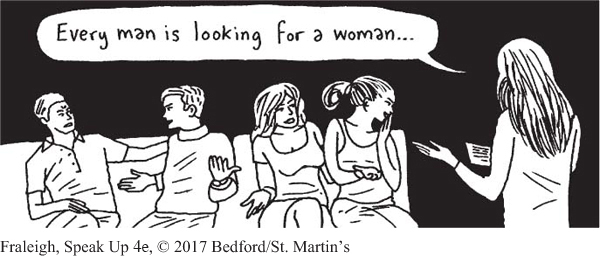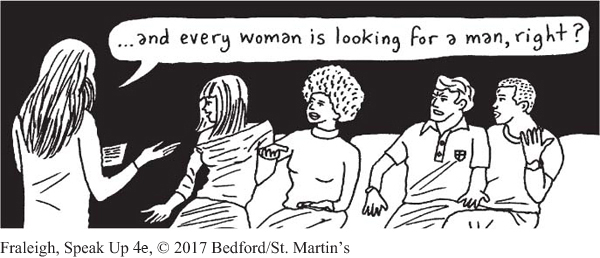Sexual Orientation
Another demographic characteristic that has become increasingly important to consider and acknowledge is the sexual orientation of your audience members. This can include straight men and women as well as lesbian, gay, bisexual, transgender, and queer or questioning individuals—
132


Given this environment, some might object to acknowledging the LGBTQ demographic, but we strongly believe that acknowledging members of the LGBTQ community is not only a smart and strategic move for a speaker but also an ethical responsibility. Statistics vary, but estimates suggest that gay or lesbian people (only two parts of the LGBTQ designation) account for up to 10 percent of our population and that those who identify as transgendered may be as much as 3 percent.6 Because speakers have a responsibility to all members of their audiences—
Acknowledging a difference in sexual orientation can be accomplished both overtly and passively, depending on what is appropriate for your speech and your situation. Open and overt acknowledgment of these differences might be accomplished by including examples or illustrations that reference LGBTQs as well as straight people. For example, a speech on conflict in relationships might include examples of gay or lesbian couples in the same breath as examples of heterosexual couples. Likewise, a speech that deals with parenting could include the story of two fathers raising a child, along with examples featuring a mother and father or a single parent.
You can offer passive acknowledgment of the LGBTQ community (and do so sensitively) through inclusive word choice when referencing sexual or relational orientation. For example, instead of speaking only of “married couples” or “a wife searching for a husband” (or vice versa), you might refer to “loving partners” or “individuals looking for a long-
133